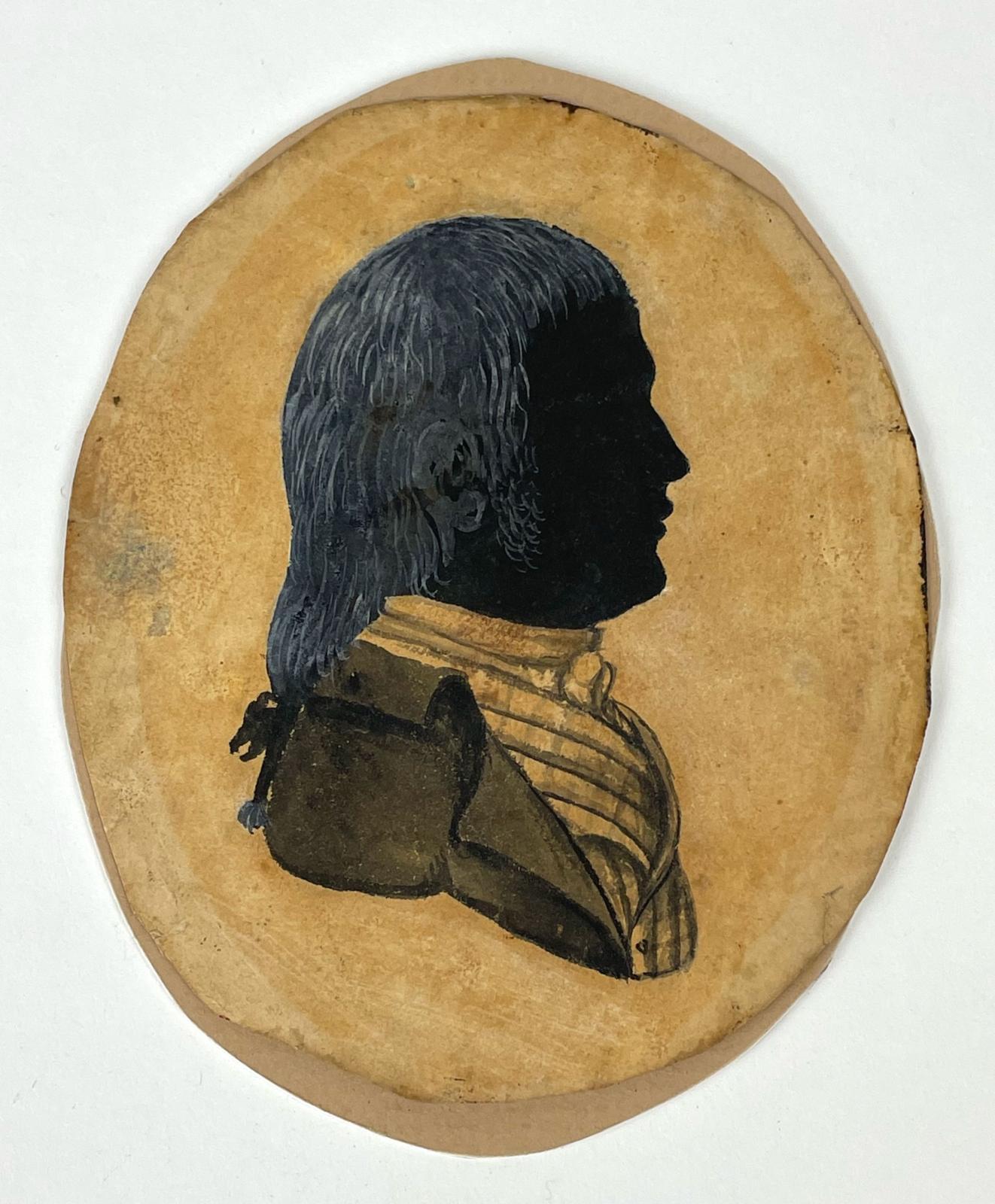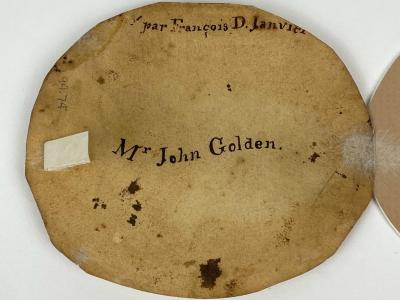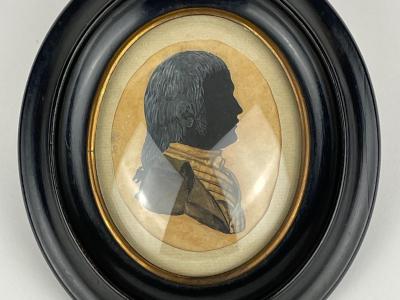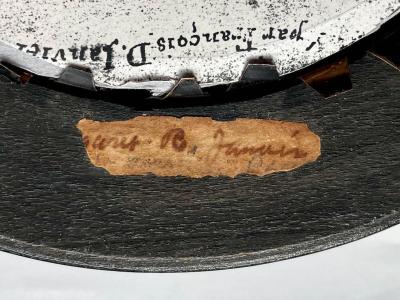Silhouette of John Golden
Princeton, New Jersey
c. 1821
Maker
Francis de Haes Janvier (1774-1824)
Measurements
Frame: 6-3/4 in x 5-3/4 in x 5/8 in; sight, 3-3/8 in x 2-5/8 in
Materials
Ink, watercolor, and pencil on paper
Credit Line
Historic Odessa Foundation, gift of Charles Dorman
Accession Number
1994.74
Inscription
"par François D. Janvier" and "Mr John Golden." are written in ink on the back of the silhouette. A fragment of a label attached to the back of the frame says "[illegible]garet R[or B or other] Janvi[e]r" in ink.
Provenance
According to dealer Randall B. Huber of Douglassville, Pennsylvania, this portrait and its mate (accession no. 1994.75) descended to Margaret Janvier Hort until its sale in 1992. At her death in 1981, Hort was unmarried and had no children. The donor acquired it after it was offered unsuccessfully to Winterthur in late September 1993.
Comments
This silhouette of John Golden (1768-1834) is paired with one of Susannah Tatlow Golden, his wife (accession no. 1994.75). Silhouette artist Francis de Haes Janvier signed the back of this profile portrait with the French spelling of his name, preceded by "par," French for "by." This playful use of French likely represents his lifelong familiarity with John, the sitter. Golden family members had intermarried with Janviers, and both families were active in Drawyers Presbyterian Church in Odessa. Except for the French (Huguenot) origin of the Janvier name, there is no evidence that any Janviers continued to speak French from the mid-18th century on. Francis was Susannah's cousin; her mother Mary and Francis's father John were siblings.
Given the obvious pairing of the two profiles, they likely were made at the time John and Susannah (called Susan by Francis) were married in 1821. Both were about 53 years old at the time. There is no evidence of earlier marriages or children for either.
The profile portrait shows a silhouette-like image in black of a man facing the viewer's right. His high-necked shirt, waistcoat, and jacket are detailed in watercolor; his long haired, gathered below in a bow, is detailed in an opaque white watercolor, or gouache. The black, which looks like a conventional cut-paper representation, is black ink of the type evident on the reverse.
Francis, the artist, had made several similar portraits. He left the family home in Odessa after his marriage in 1805 to Mary Thomson (1780-1829) and moved with her to Princeton, New Jersey, where her parents lived.



